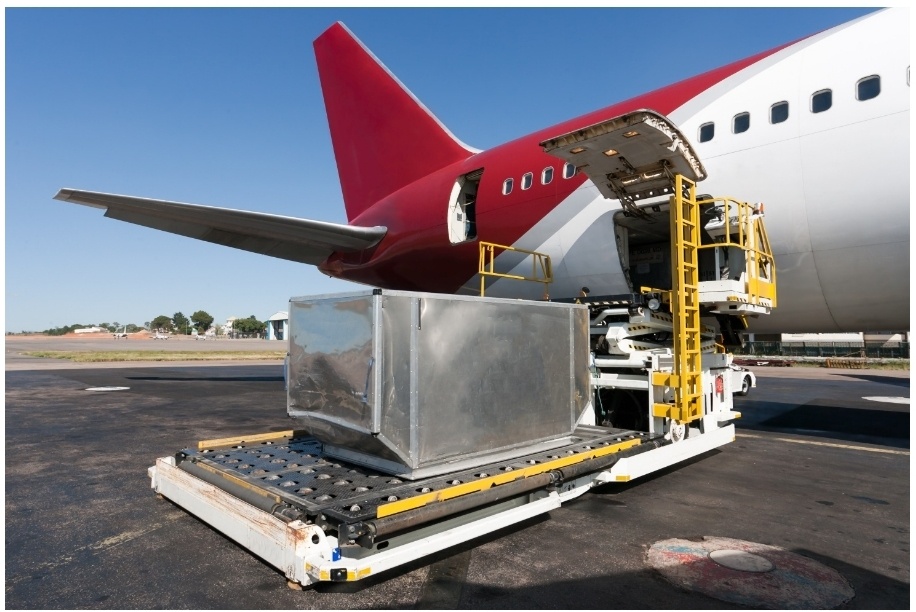A volatility in the U.S. air cargo perishable goods market took center stage at the peak of the global pandemic in late 2020 and early 2021. Fruit, flowers, berries, seafood, and fresh meat producers scrambled for every available air cargo space to get their time-sensitive produce to the market on time.
Seasonal soft fruit producers, most notably from the U.S. West coast, battled it out for perishable air cargo space onboard already cramped aircraft. This demand for space drove the price of fruits, flowers, berries and other perishable goods higher in an already wary marketplace. It is widely known that the majority of consumers of these products – most notably in the luxury produce sector – know the limits of what they are willing to pay. If the produce becomes too expensive, the consumer will switch their preferences or change to cheaper more accessible products.
Hoteliers, fine-dining establishments, specialist food stores, and regular grocery stores did their best to keep the supply chains running, but were often forced to source alternative products.
Perishable goods pre-pandemic
Before the start of the pandemic, goods such as perishables would normally have been transported as aircraft belly cargo onboard scheduled passenger flights. However, this practice was greatly affected by the grounding of most scheduled airline fleets and the lost perishable belly cargo space that came with the move.
Unlike non time- or temperature-sensitive goods, perishables need to be transported from supplier to market – or cold chain storage – quickly and sensitively to ensure the product’s freshness and quality.
The perishable goods air cargo market differs significantly from other air cargo sectors and requires a different set of packing conditions than automotive spare parts or electrical goods. The specialized conditions will mean controlled temperatures, different cargo containers, more sensitive handling, and even specialist humidifiers or freezing equipment – all of which must meet stringent international safety standards and regulations.
Before we go any further, it is helpful to note that the first port of call for anyone wishing to send perishable goods in the U.S. or internationally should be the offices of an experienced perishable air cargo agent. As we’ve already touched upon, perishable goods bring their own set of rules and conditions that need to be strictly adhered to, and professional air freight experts have all the answers a producer will ever need.
What are perishable goods?
To put it simply, perishable goods are fresh or frozen products that are time- and temperature-sensitive. They need to be prepped for market, packed, and follow a strict cold chain strategy to arrive at their final destination in a fit-for-purpose condition.
Seafood, fresh fruit and vegetables, berries, cut flowers, dairy products, along with meats and meat products all come under the banner of perishable goods. Flowers, fruits and vegetables tend to be shipped at low temperatures to halt or delay the ripening process. Seafood and some meats need to be transported frozen to ensure they don’t pose a health risk to the end consumer.
Air cargo perishable goods come with a set of unique conditions – the type of produce will determine how they should be packed, handled, stored, and moved during the whole freight process. For example, transporting cut flowers from Kenya to New Orleans by air demands a different set of conditions than sending a consignment of frozen lobster tails from Maine to Arizona.
Types of perishable produce
There was a time when people waited patiently for their favorite foods to come into season; berries and fruits in summer, nuts and fungus in autumn, turkeys for Thanksgiving, and fresh flowers in spring. Thanks to perishable air cargo, and modern refrigeration technology, every day can be any season you want it to be with the ease of availability of products from right across the country, or even globally.
Plus, as more people are living healthier lifestyles, the demand for fresh produce has grown to match the demand. As that demand grew, all of the market stakeholders – producers, ground transporters and air cargo charter companies came together to streamline the whole logistics process.
What foods are transported by air?
- Fruits, berries, and Vegetables
- Meat and meat-based products
- Shellfish
- Seafood
- Frozen foods
- Dairy products
- Eggs
- Fresh cut flowers
- Plants
- Confectionary
- Pharmaceutical products
Each type of perishable produce has its own packaging and storage rules and regulations that are governed and controlled by the International Air Transport Association (IATA).
A world without flowers
A world without flowers would be a pretty dreary place. For weddings, birthdays, Valentine’s Day, anniversaries, or just to say hello and thanks, flowers are a huge part of the US economy.
It would seem, that as a nation we are obsessed with fresh flowers – in 2021 the fresh cut flower market in the US was valued at approximately $15.85-billion – that means that transporting flowers on a plane was big business, despite the pandemic.
However, the largest growers of fresh flowers are the Netherlands, Ecuador, Colombia, Ethiopia, and Kenya, none of which are overly convenient to their respective markets. That means that flowers, to find their way into vases all over the world, need to be transported by specialist cargo companies who understand the business inside-out.
The short shelf-life of flowers demand that the fresh produce needs to be shipped in tried and trusted conditions, a process that means that air cargo is the only way to ship flowers from anywhere in the world.
Sending perishables by air cargo – the complete process
Products, like flowers, arriving at their destination in anything but peak condition will affect their value and the reputation of the producer.
One major factor that can influence delivery quality is temperature fluctuations. For that reason, knowing how to package flowers – and other perishables – for shipping is imperative. Having a close relationship between the producer and the cargo agent will help ensure that temperatures are maintained and excess handling is avoided at all costs. To ensure this, experienced cargo charter companies have designated departments dedicated solely to the transport of fresh flowers and other perishables, and are staffed by professionals who understand every detail of their industry.
An experienced air cargo handler can take all the pain from the perishable-shipping process.
The responsibilities of the shipper may include:
- Advice on bookings, specialist handling instructions of storage instructions
- Obtain all permits, licenses, and any relevant CITES documentation
- Declaration of the consignment to be shipped
- Creating industry-standard identification labels
- Provide a person of contact who should be available 24/7
- Ensure that staff are aware of and fully trained in their responsibilities
- Terminate ownership once delivery is complete
In the same as shippers have responsibilities, carriers also have a duty of care to ensure safe delivery.
When shipping perishables the carrier should consider:
- All restrictions and regulations that can delay delivery
- Are all communications accurate and correct?
- Have you addressed the safety of the goods, crew, aircraft, or employees’ health?
- Will the goods arrive in time?
- Has enough cargo space been booked?
- And are there any special handling requirements?
- Are there any segregation rules concerning the cargo to be shipped?
- Check that the shipper has completed all documentation and permits
- Has the shipper provided all accurate and necessary information?
- Have all safety considerations been met?
- Do you have a backup plan in place should anything go wrong?
- Have all the necessary customs obligations been fulfilled?
Other considerations for perishable air cargo
Communicate clearly
Good communication with the air cargo shipping company will help to ensure that they can organize any special requirements needed to make sure that the produce arrives on time with no deterioration in quality. By working in a united fashion, producers, brokers, carriers, and every point of contact throughout the supply chain can understand each other’s working practices and help guarantee a successful operation every time.
Tracking your produce
Knowing where your perishables are at any given time is especially important for cargo with a short shelf-life. That’s why good cargo operators employ RFID (Radio Frequency Identification) technology to monitor the location of the goods when necessary and keep all interested parties informed of its progress.
Tracking and traceability are vitally important in the food industry should any health issues arise at a later date. Focused and documented tracking can offer a paper trail for investigators in the case of food poisoning or any other health-related concern. The traceability provided by tracking can create a virtual map and timeline from the point of production to its final location.
Packing your perishables
If it’s your first time to ship perishable goods, whether it’s the air freight transport of fresh fruit and vegetable or frozen food, an experienced cargo operator can help you understand the rules of packing perishable goods.
Here are some of the basics of packaging to get you started.
- The packaging needs to be flexible to account for changes in altitude (air pressure)
- The packaging must be able to maintain internal temperatures and accommodate external temperatures
- It should be sturdy enough to stack and allow for handling on the ground and in the air
Common types of packaging used for shipping perishables:
- Expanded polystyrene packaging
- Rigid plastic packaging
- Flexible plastic packaging
- Fiberboard packaging
- Wooden crating or packaging
- Metal cans and canisters
- Vacuum – or modified atmosphere – packaging
Ensuring that your produce has the right labeling is also vitally important in ensuring that the goods are shipped correctly. Labels should include directions such as ‘This Way Up’, ‘Urgent’, ‘Fragile’, or ‘Fresh Produce’. And remember, some perishable goods, like goods in ice, need to be shipped in a double packaging solution; an inner box within an outer box and the labeling should match whichever system is used.
For fruits, vegetables, and flowers being shipped internationally from the U.S., some countries insist on the use of pest netting to completely cover the entire shipping pallet and exclude pests.
Perishable cargo experts – the first stop
As much as you might think that you know about perishable goods shipping, a professional U.S. freight cargo agent will know more. Even though all the rules and regulations are listed by the IATA in their cargo guidelines handbook, you will save yourself a lot of time, money, and worry about the condition of your valuable cargo by consulting a professional cargo agent in the first place.
Building a relationship with an experienced air cargo operator can never be overestimated in its value. Once contracted, they are on hand 24/7 and ready to firefight any situation that might present itself. This valuable connection will help ensure that your products arrive on time, in the best condition possible, while ensuring profitability and your brand’s reputation.





5 comments
… [Trackback]
[…] Read More Info here on that Topic: thelibertarianrepublic.com/perishable-goods-air-cargo-ensuring-fresh-products-arrives-in-peak-condition/ […]
… [Trackback]
[…] There you will find 15391 additional Info to that Topic: thelibertarianrepublic.com/perishable-goods-air-cargo-ensuring-fresh-products-arrives-in-peak-condition/ […]
… [Trackback]
[…] Here you can find 60377 more Information to that Topic: thelibertarianrepublic.com/perishable-goods-air-cargo-ensuring-fresh-products-arrives-in-peak-condition/ […]
… [Trackback]
[…] Find More on on that Topic: thelibertarianrepublic.com/perishable-goods-air-cargo-ensuring-fresh-products-arrives-in-peak-condition/ […]
… [Trackback]
[…] There you can find 3387 additional Information on that Topic: thelibertarianrepublic.com/perishable-goods-air-cargo-ensuring-fresh-products-arrives-in-peak-condition/ […]